How do I export a security certificate from Chrome v37 on a Mac?
Previously I could click on the little lock icon next to the URL, select "Connection," select the certificate, and an "Export" button would appear.
Not so anymore!
How do I export a security certificate from Chrome v37 on a Mac?
Previously I could click on the little lock icon next to the URL, select "Connection," select the certificate, and an "Export" button would appear.
Not so anymore!
Edit 4/3/19: I have found a workaround. This is tested on Chrome for Mac 73.0.3686.86 64-bit, platform: macOS 10.14.4:
If you don't hold down Option when you drag, then you will instead get the certificate contents in human-readable form, which can also be handy.
(Edited 2/24/19: @RichardTopchiy is correct, this no longer works. Testing on Chrome 72.0.3626.119 64-bit. I don't know of any workaround at the present.)
(Edited 2/10/17: I have added a more up-to-date answer in a comment: How to Export Certificate from Chrome on a Mac?)
This is based on Chrome 42.0.2311.135 (64-bit) for Mac.
You should make flowing steps,
show certificate detail on chrome browser on macOS

drag big certificate icon on certificate detail window

drop the icon to desktop and ta-ta!
created the domain certificate .cer file on the desktop

As of Chrome 72 the certificate icon cannot be dragged/exported from Chrome as @RichardTopchiy stated in his comments.
However Safari does still allow the certificate icon to be dragged from the browser.
So the easiest way to export the certificate from Chrome is... to use a different browser to export the SSL certificate. Once the certificate is trusted, it will work on any browser on that device's user account. You're just using Safari to export the certificate easily.
@Simon Zuckerbraun's answer is correct. My workaround is almost the same as Simon's. But don't need to use Text Editor, just drag the certificate to the Desktop Window then the certificate will be created immediately. Follow these steps :
Click here for more details
I found a workaround and tested by Chrome Version 73.0.3683.103 (Official Build) (64-bit) on Macos 10.14.3.
When open the site with unsafe certificate, Chrome will show an error page 'Your connection is not private', follow the below steps:
Just found out this does not work on Chrome Version 105.0.5195.125 on MacOS.
The certificate viewer looks like this now:


I haven't found a way how to save a certificate, but if you want to access the page just type the following while the focus is on the page:
and the page will load instantly.
found the information here: https://www.rffuste.com/tag/neterr_cert_invalid/
You could use Firefox or Safari instead of Chrome.
I was able to start it with --ignore-certificate-errors --incognito. Incognito so that it doesn't use any open sessions.
New browsers process is different. Please follow the below steps Inspect the chrome browser-> You can find Security tab -> Click on the View Ceritificate button then i will open the popup Click on the details tab and press Copy to file button
Then press the buttton Next->Next->Browse->Save the file in your local directory. The file will save with .cer extension.